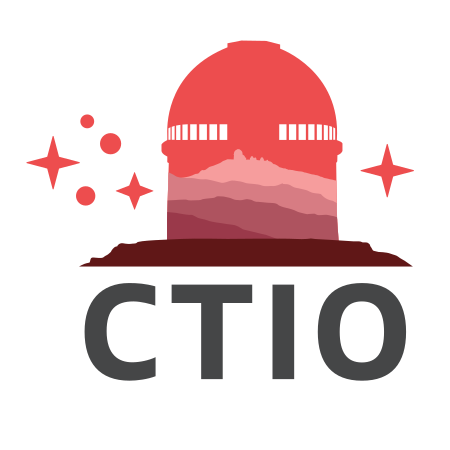About
NSF Cerro Tololo Inter-American Observatory (CTIO)
Beginning science operations in 1965, NSF Cerro Tololo Inter-American Observatory (CTIO) is a complex of astronomical telescopes located on Cerro Tololo in the mountains of northern Chile, with associated facilities on nearby Cerro Pachón. Since its inception, it has served as the principal optical and infrared platform for U.S. astronomers studying the southern skies. Observations made here have led to groundbreaking discoveries, including the accelerating expansion of the Universe and the concept of dark energy.
Our Telescopes and Research
CTIO is home to over 40 telescopes, each playing its own role in a diverse range of research areas. From exoplanet exploration and the dynamics of supernovae to the motions of asteroids and comets to the study of cosmic phenomena like gamma-ray bursts, as well as Earth’s atmosphere and dark energy, our telescopes support a broad spectrum of scientific study. These facilities also serve an important educational purpose, aiding in the training of the next generation of astronomers and informing the public.


The NSF Víctor M. Blanco 4-meter Telescope has pristine access to wide open skies of the Chilean Andes from its perch at CTIO, a Program of NSF NOIRLab. To the upper left of the telescope is the ‘evening star’, actually the planet Venus. Below on the left are the SMARTS–GSU 1.5-meter Telescope and SMARTS–GSU 0.9-meter Telescope (furthest back).
The NSF Víctor M. Blanco 4-meter Telescope and the Dark Energy Camera
The largest telescope at CTIO, the NSF Víctor M. Blanco 4-meter Telescope, is equipped with the Dark Energy Camera (DECam) which was originally built by the Department of Energy to be used in the Dark Energy Survey (DES) between 2013 and 2019. This high-performance 570-megapixel wide-field CCD imager was the largest digital camera in the world at the time of its construction and now supports a wide variety of scientific programs beyond its original purpose.
Dark Energy Survey
 The Dark Energy Survey (DES) was aimed at understanding what role the mysterious phenomenon of dark energy plays in the accelerating expansion of the Universe. Its purpose was to map hundreds of millions of galaxies, detect thousands of supernovae, and find patterns of cosmic structures to reveal what is causing cosmic expansion to speed up. This ambitious survey has left a lasting legacy in the form of an extensive data archive that is being managed by the Community Science and Data Center (CSDC) with the support and funding from the U.S. Department of Energy (DOE) and the U.S. National Science Foundation (NSF).
The Dark Energy Survey (DES) was aimed at understanding what role the mysterious phenomenon of dark energy plays in the accelerating expansion of the Universe. Its purpose was to map hundreds of millions of galaxies, detect thousands of supernovae, and find patterns of cosmic structures to reveal what is causing cosmic expansion to speed up. This ambitious survey has left a lasting legacy in the form of an extensive data archive that is being managed by the Community Science and Data Center (CSDC) with the support and funding from the U.S. Department of Energy (DOE) and the U.S. National Science Foundation (NSF).
Southern Astrophysical Research Telescope
In addition to the telescopes on Cerro Tololo, CTIO operates the 4.1-meter Southern Astrophysical Research (SOAR) Telescope on nearby Cerro Pachón. SOAR is among the foremost research facilities available to astronomers in the southern hemisphere, offering both imaging and spectroscopic capabilities at wavelengths from optical to near-infrared. SOAR is a joint project of the Ministério da Ciência, Tecnologia e Inovações do Brasil (MCTIC/LNA), NSF NOIRLab, the University of North Carolina at Chapel Hill (UNC), and Michigan State University (MSU).
Tenant Observatories
In addition to its primary telescopes and consortia, Cerro Tololo is home to approximately 40 telescopes from almost a dozen tenant observatories and research projects, providing a vital platform for accessing the southern skies for both U.S. and international scientific research. Notable among these are the MEarth Project, which employs robotically controlled telescopes to hunt for transiting exoplanets around nearby M dwarf stars, and telescopes integrated into the global network of the Las Cumbres Observatory.

